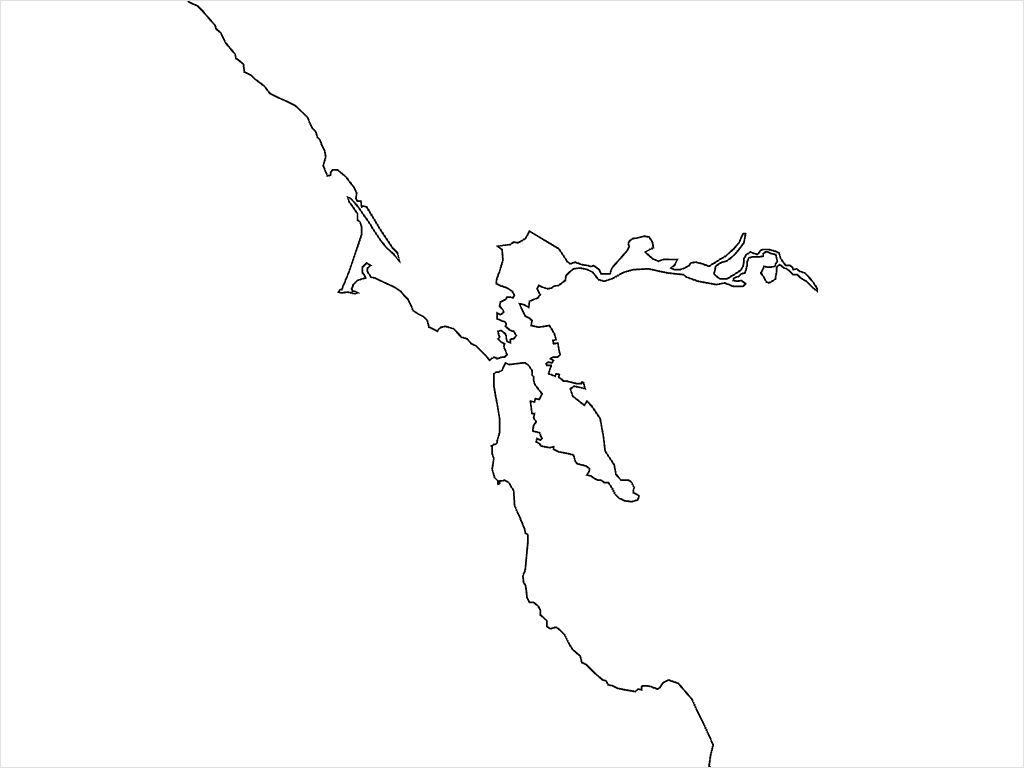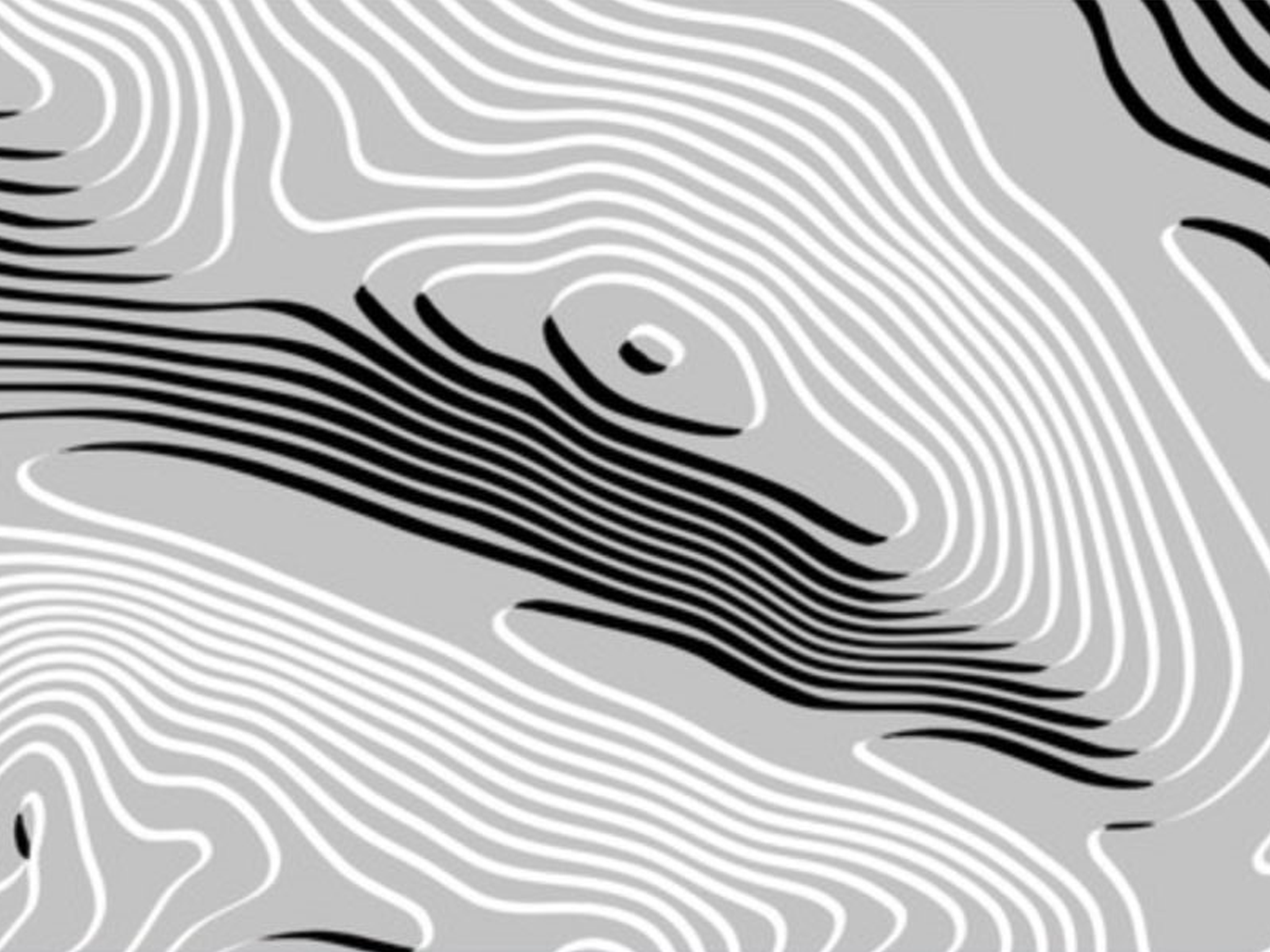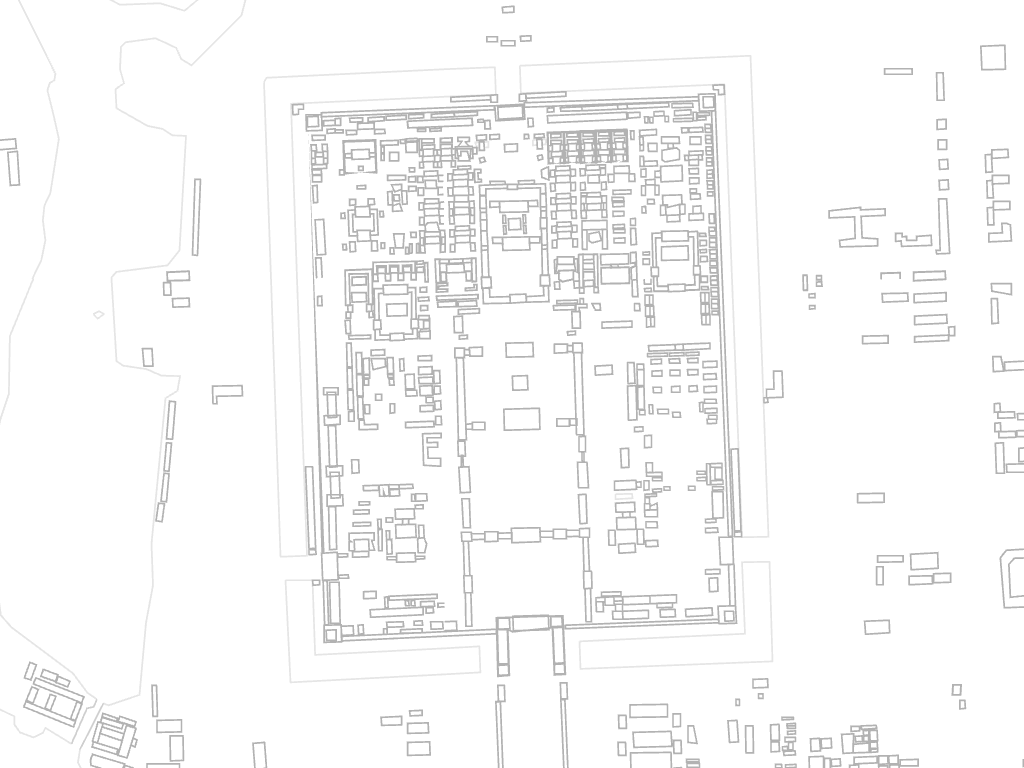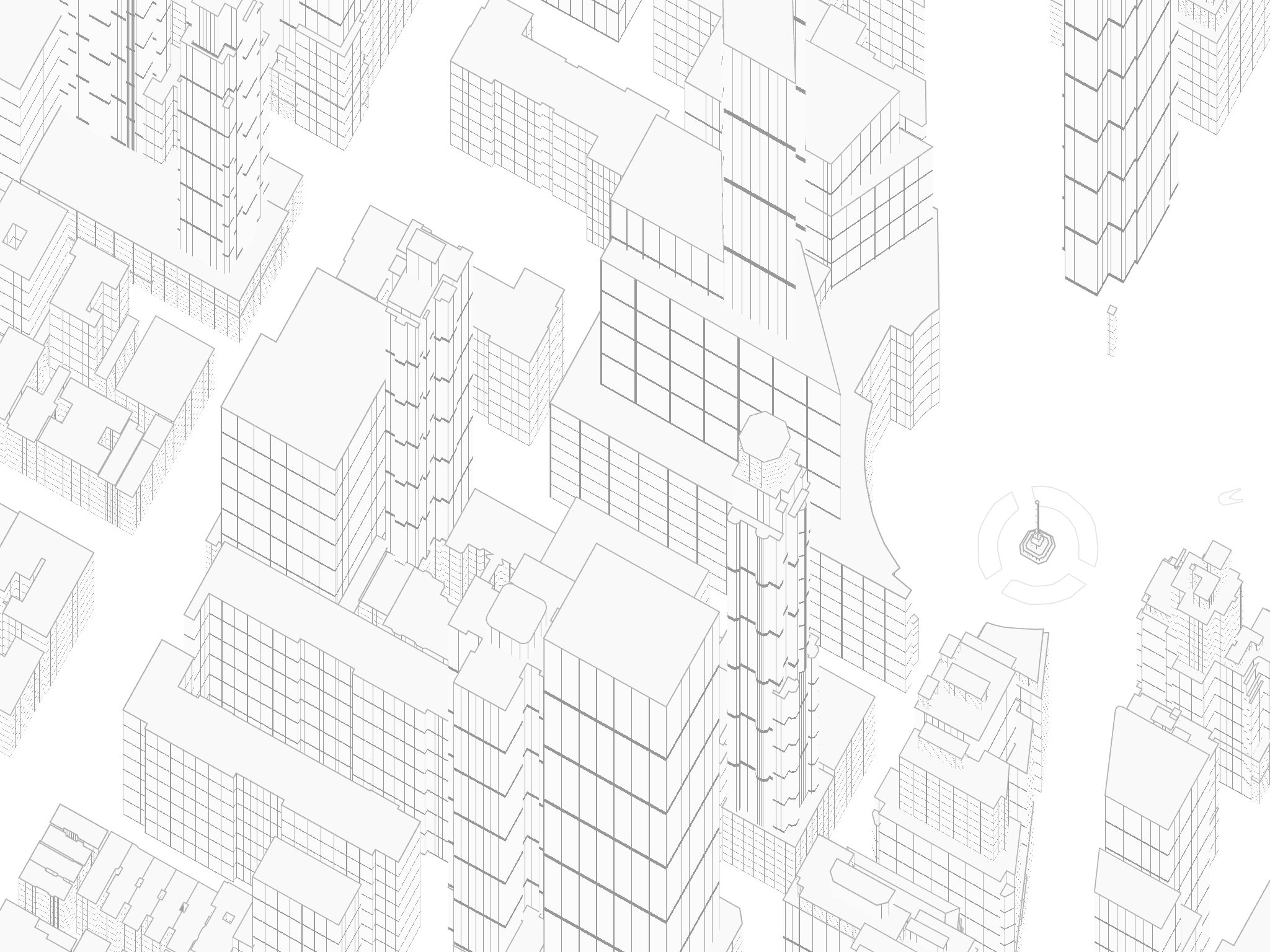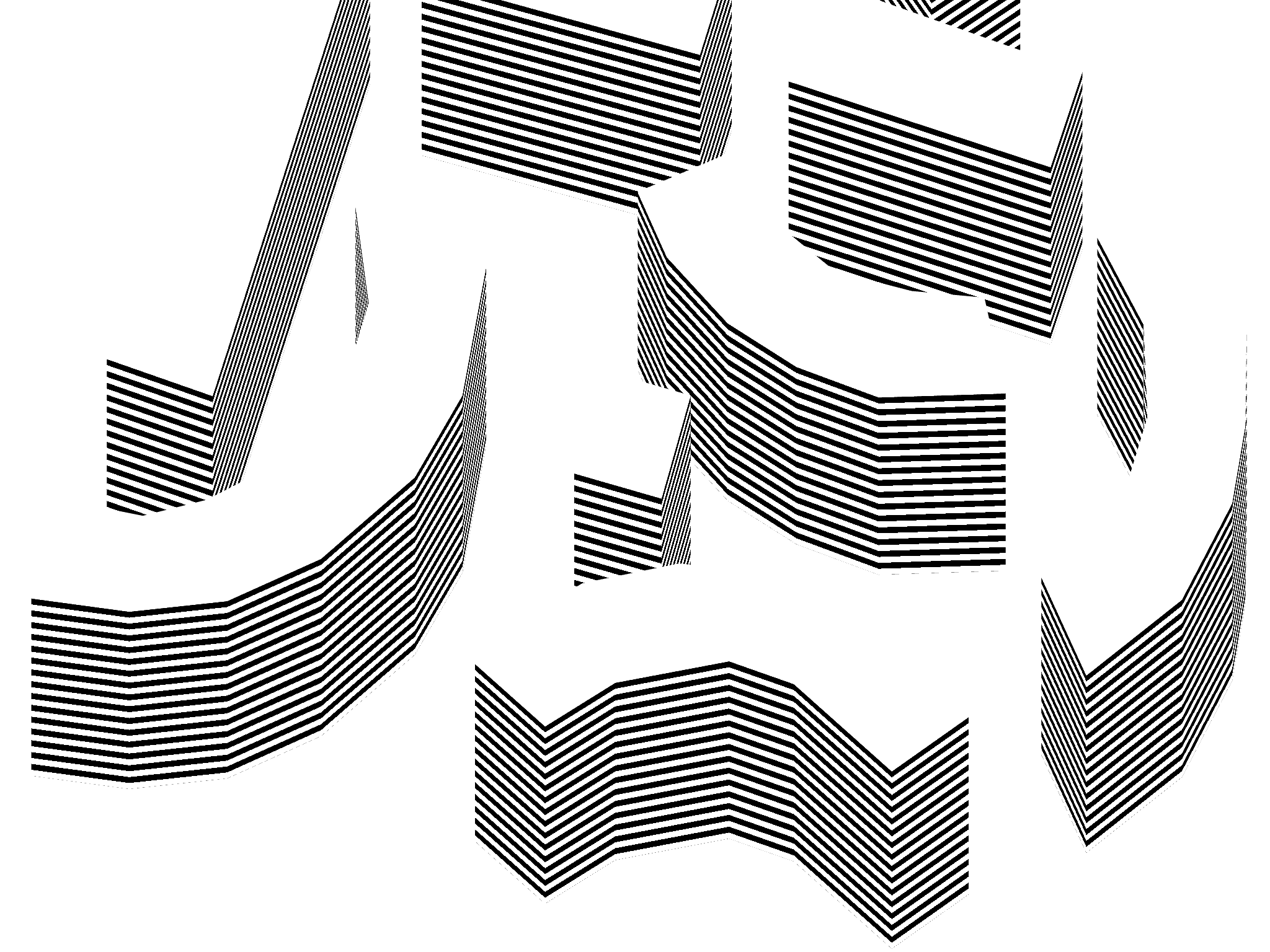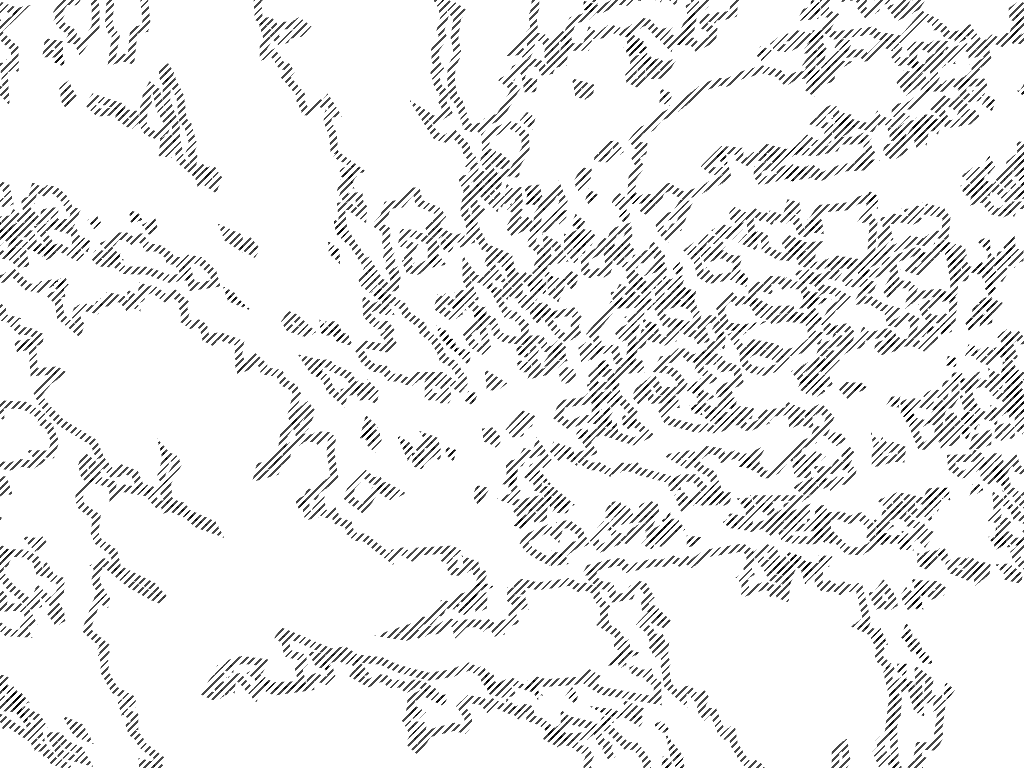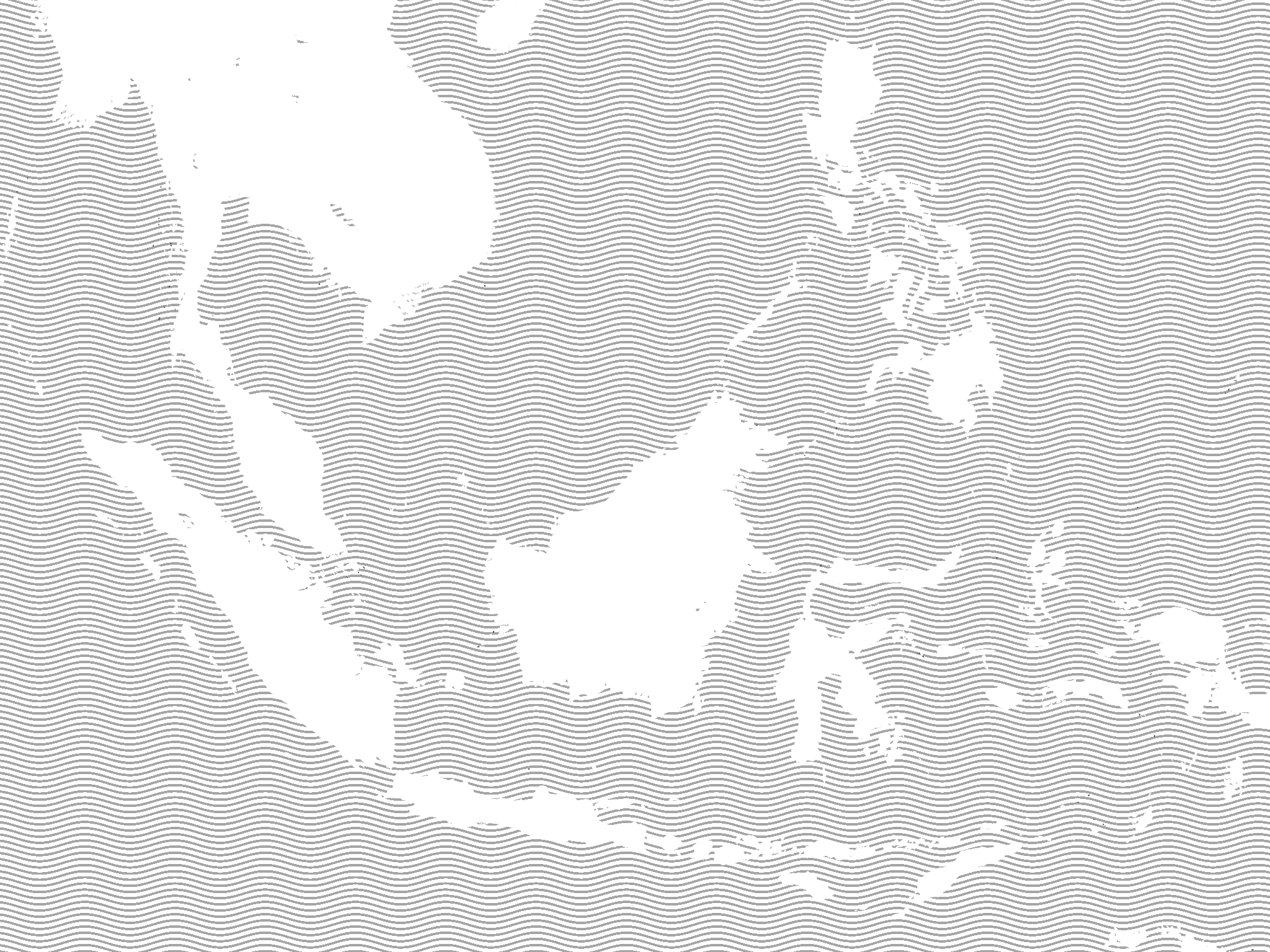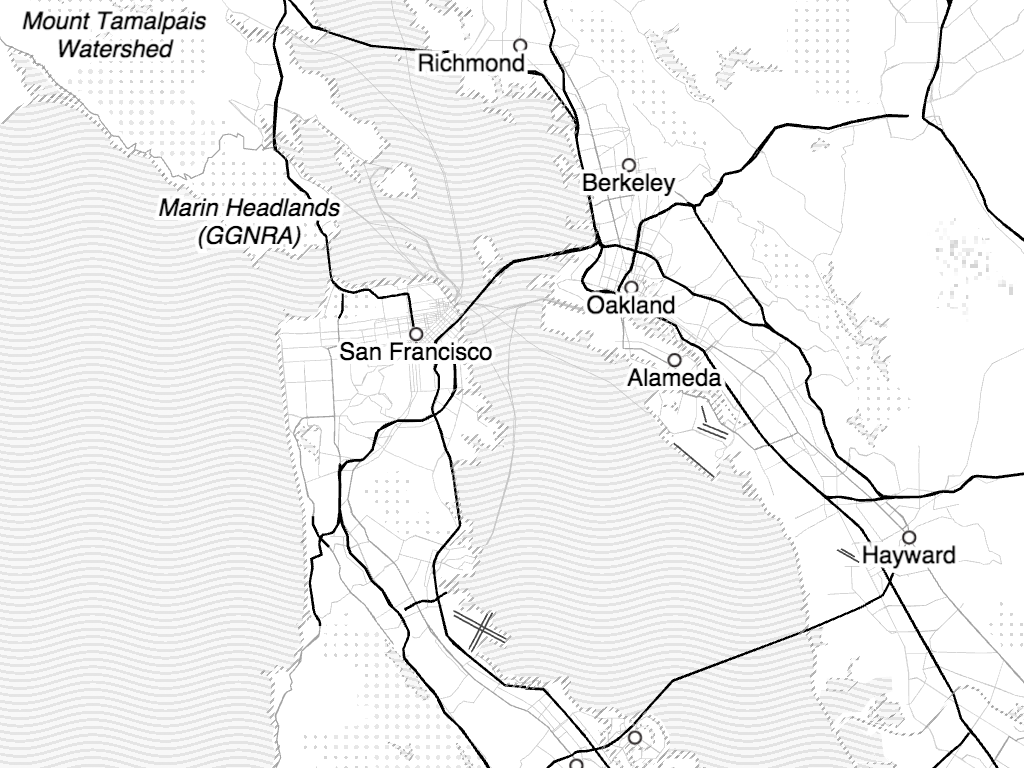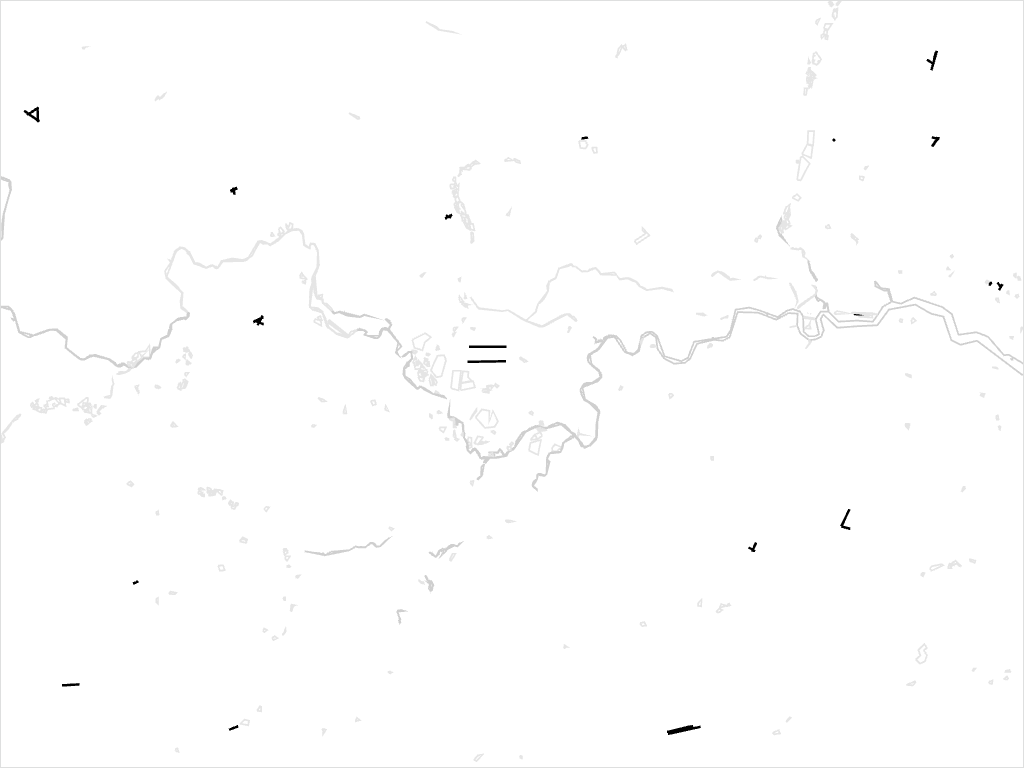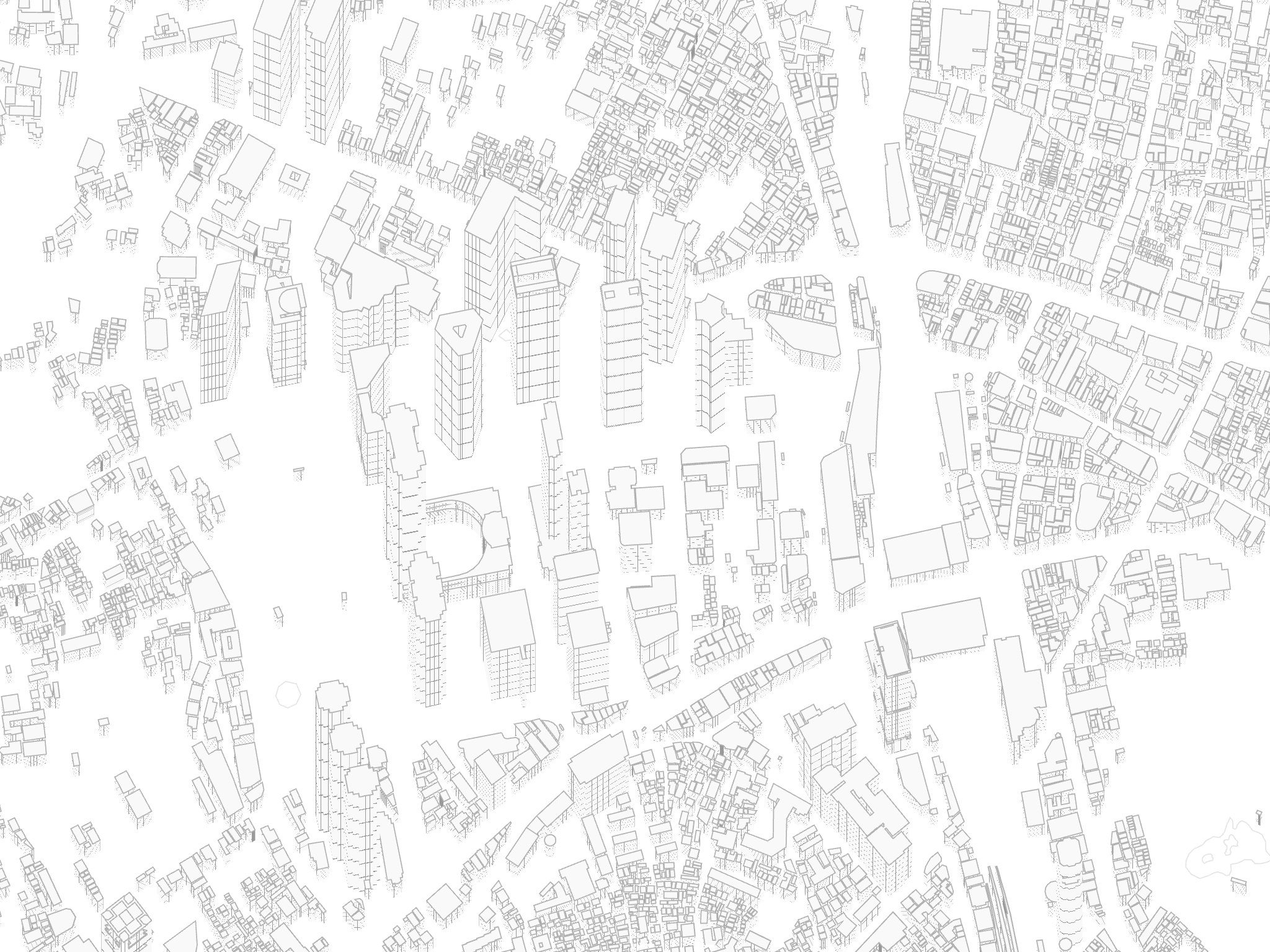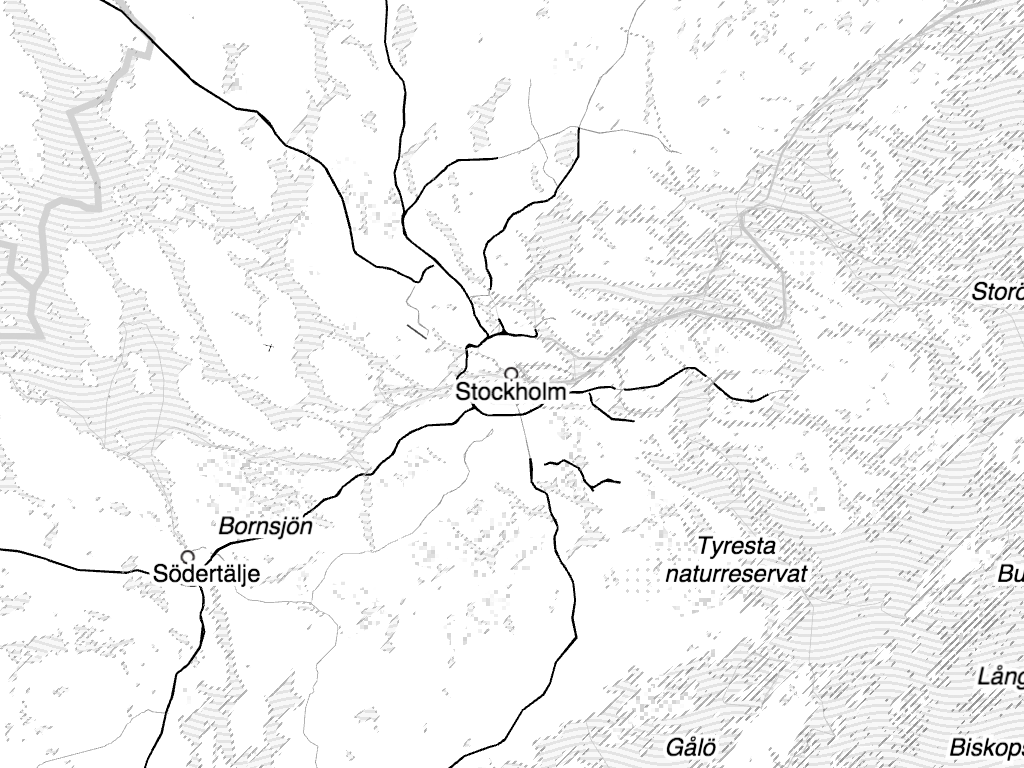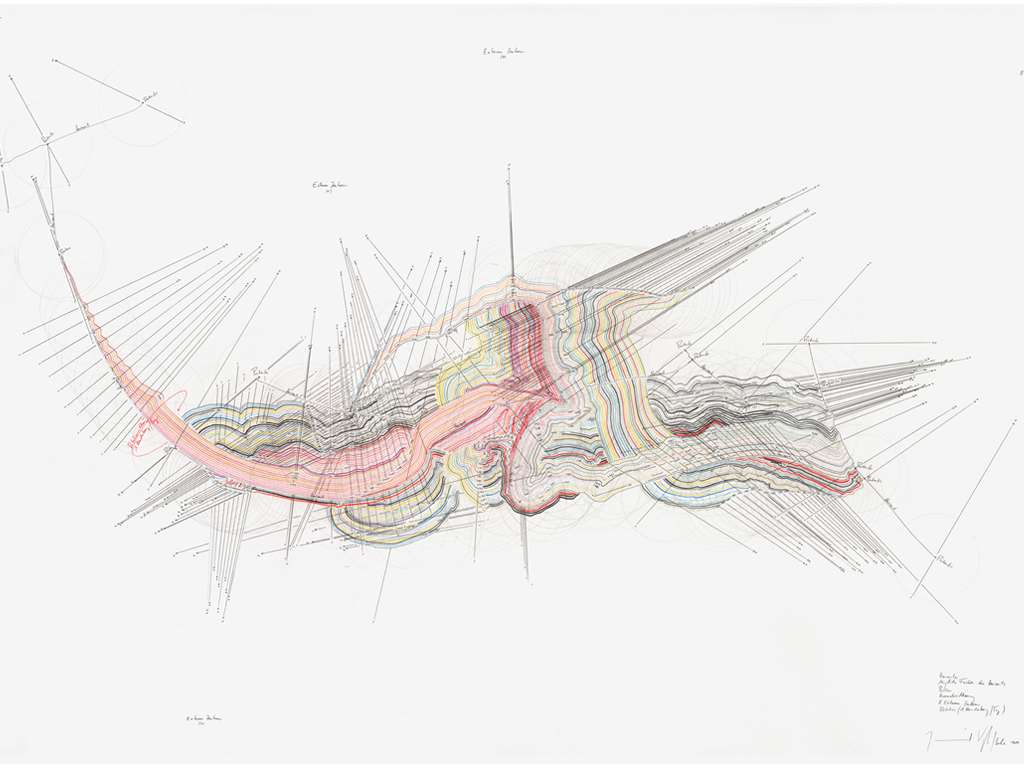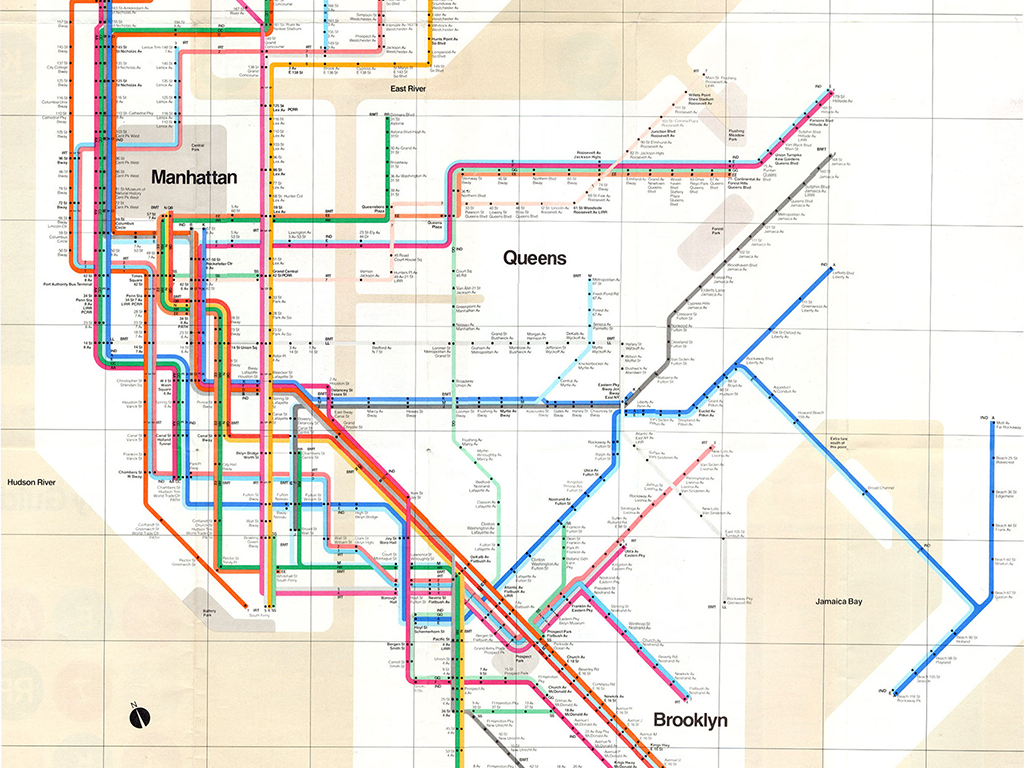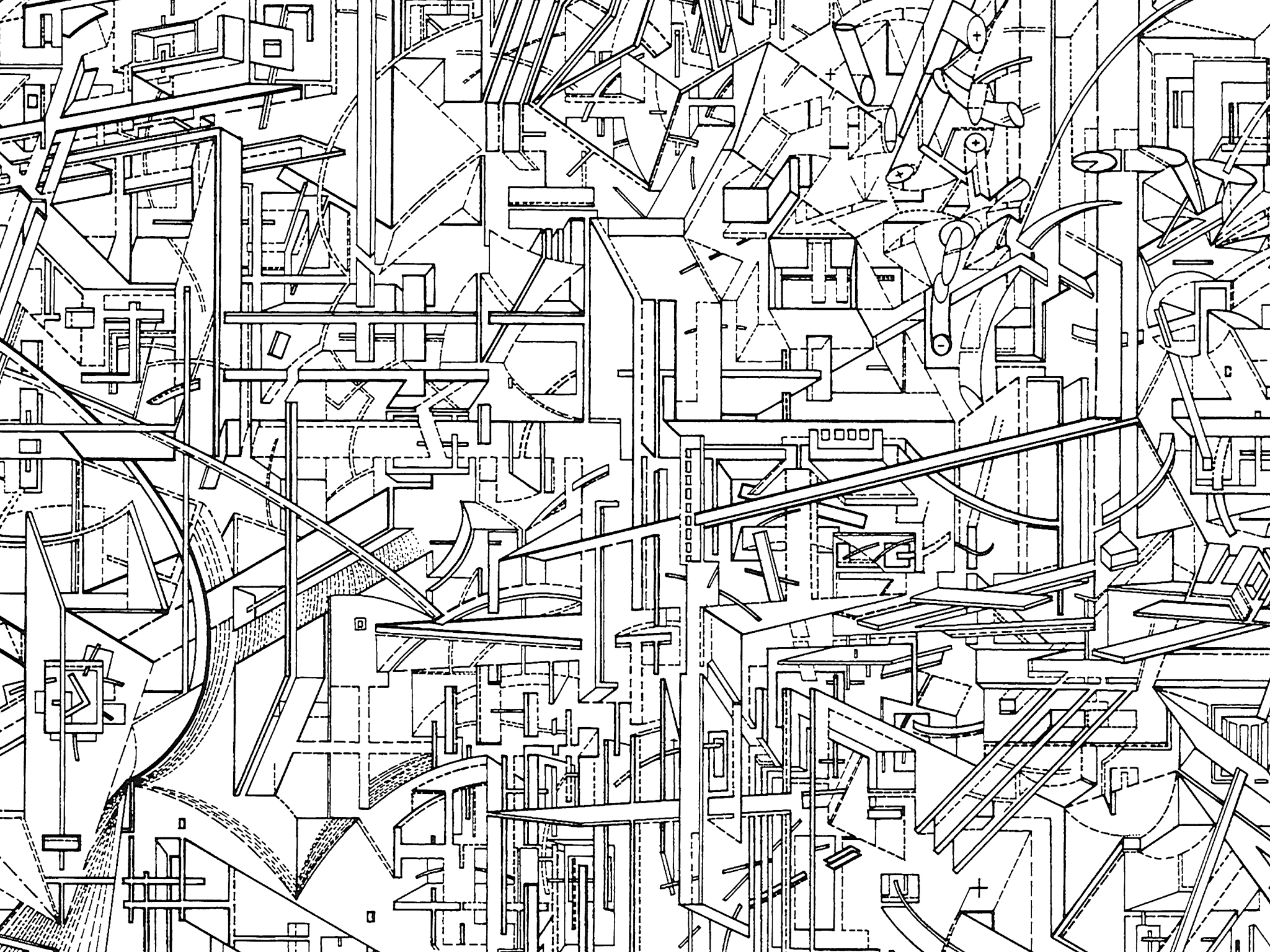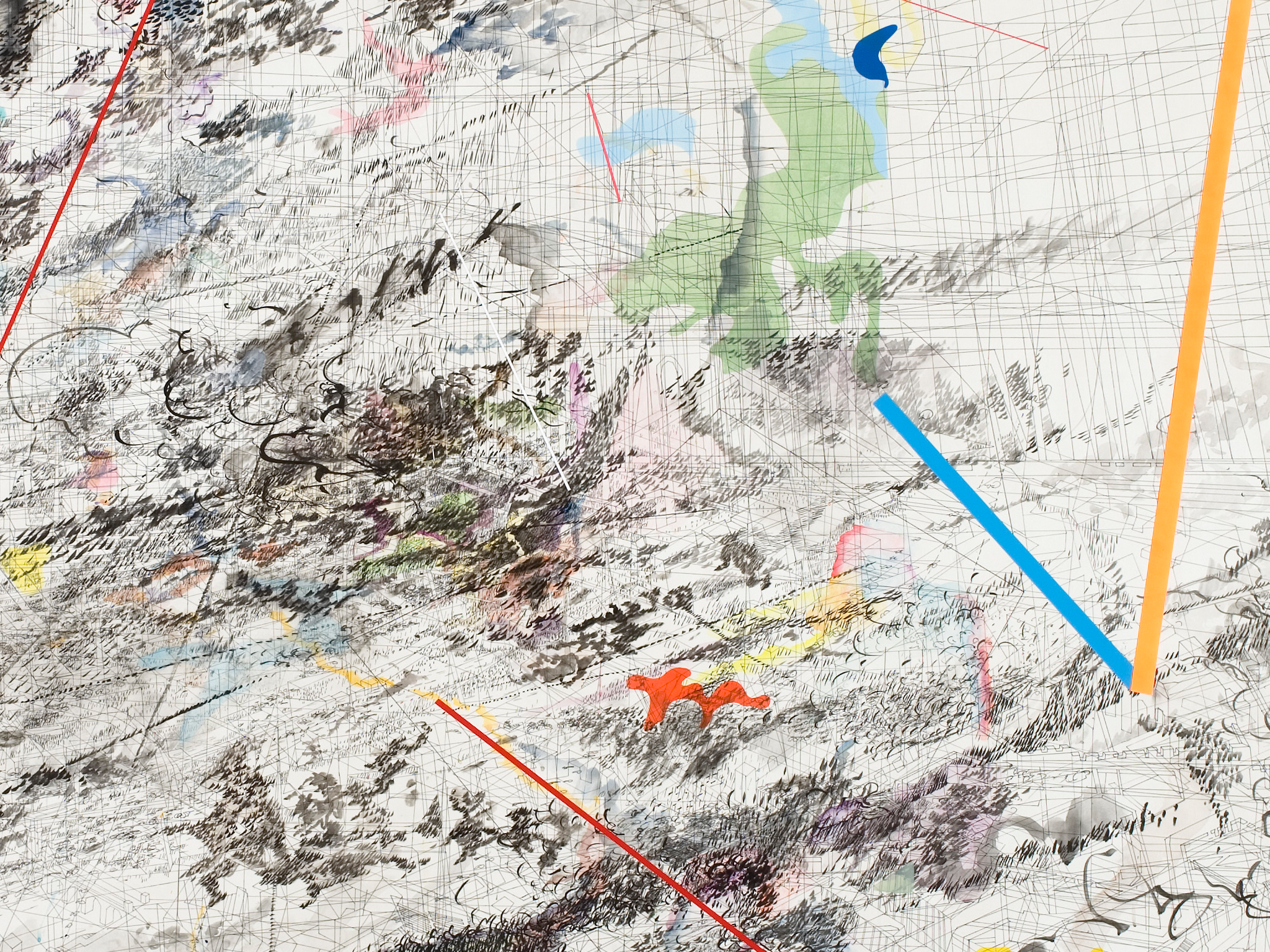Cartographic design is all about drawing. Before I begin something new, I always start by reflecting on the essentials. I like to dissect and think about the most basic elements. What’s in my toolbox? What are my ingredients? Let’s think about lines. What can lines describe?
A line can describe a route - from point A to point B

A line can describe a shape or a form, such as a coastline
A line can describe a ground feature such as these airport runways at SFO
In this case it’s a drawing but, now also a symbol, like a signature or calligraphic writing. Fascinating!
With contour lines we can give forms dimension
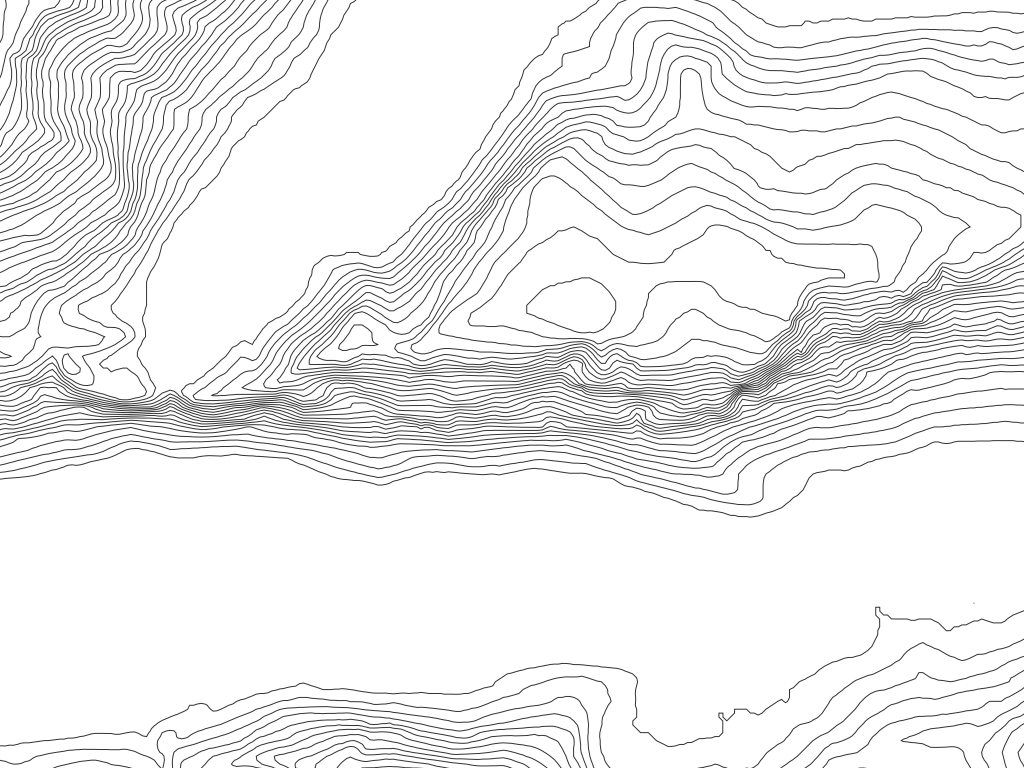
image from Thematic Mapping - link
Here’s a drawing technique I learned at NACIS, called Illuminated or Shadowed Contours, or otherwise called “Tanaka Contours”
James Eynard gave a detailed talk about this drawing technique in Minneapolis at NACIS this year, Evaluating the Effectiveness of Illuminated and Shadowed Contour Lines - link. This technique was developed by Tanaka Kitiro in 1950 - link.
Here are a variety of railroad lines by cartographer Erwin Raisz
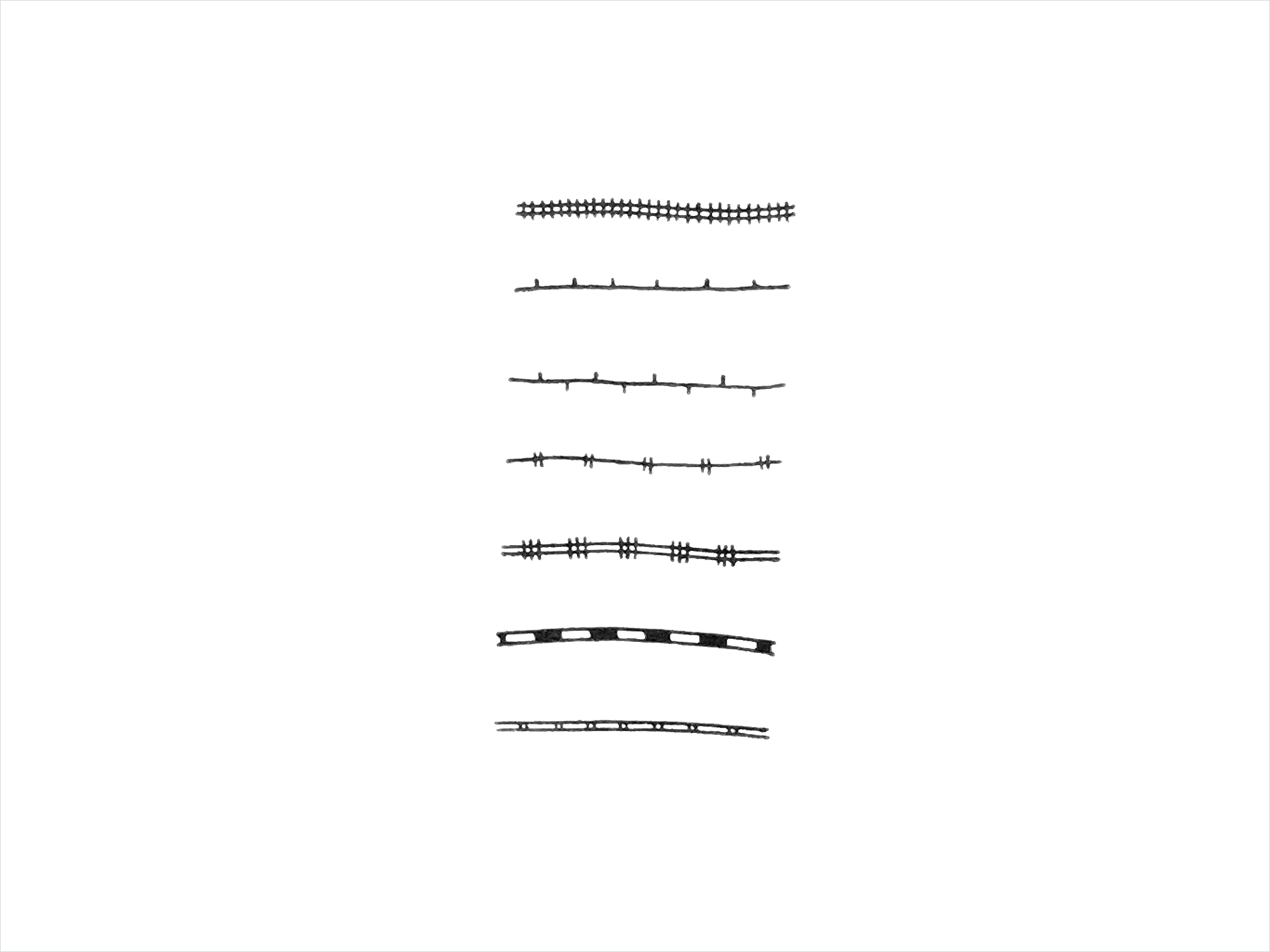
Lines can also describe a structure such as a grid
Check out these grids!
Lines can form into polygons such as these building footprints
Forbidden City, Beijing
Apply a grid to a building facade and it becomes a surface
Columbus Circle, Manhattan
Repetition! The tool I love most! Repeat a line and we have stripes!
Brasília
Change the rhythm and we have a gradient
Lower Manhattan
Stripes can become texture when applied to lines, such as these diagonal stripes on a coastline
Stockholm Coastline Area
Or apply these repeated wave lines to an area and you can create a water texture
Southeast Asia
I use some of these drawing techniques in one of our featured styles called Refill. Refill is a continuation of the Toner style I started at Stamen. Think of Refill as a more detailed Toner, an elaboration with the GL capabilities of Tangram. With Tangram I’m able to explore more detailed line work, patterns and building extrusions. Below are some highlights of line-work from the Refill Style along with some isolated examples of drawing techniques I talked about above.
San Francisco in Refill
YYJ Victoria, British Columbia
HND Tokyo in Refill
Airport Runways Looking Like Symbols around London
Shinjuku West
Stockholm Coastline Views in Refill
Rome in Stripes!
Building extrusions in Singapore
I’ll conclude this with some gorgeous examples of beautiful line-work for your inspiration.
Go and explore what you can do with lines!
Read the Tangram Documentation for more details. Let us know if you have any questions!
